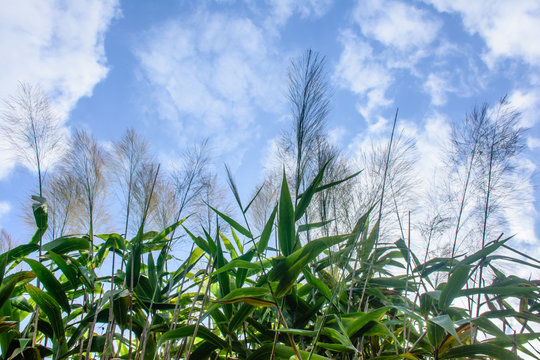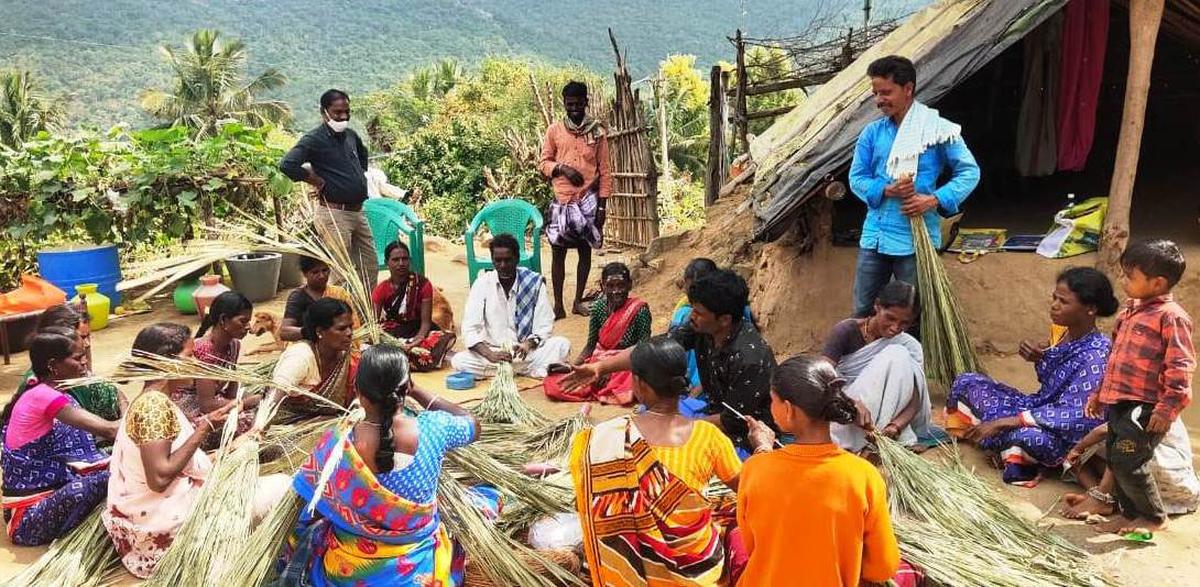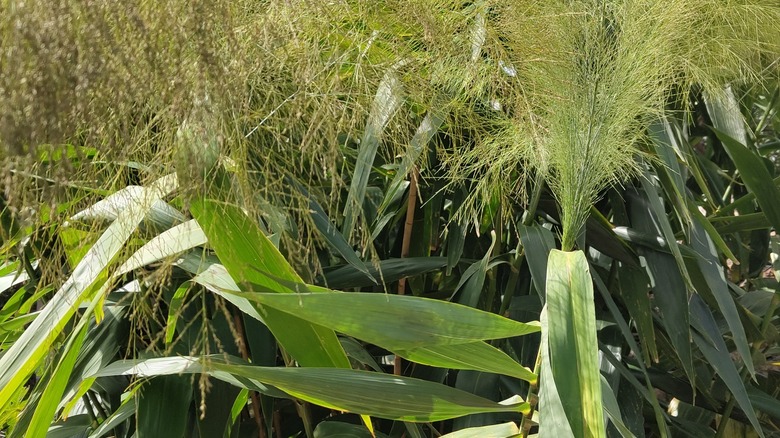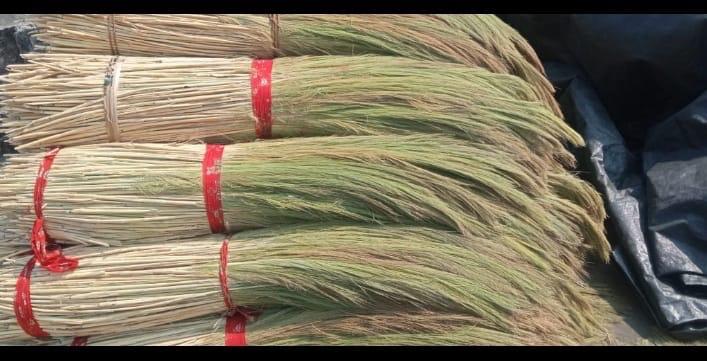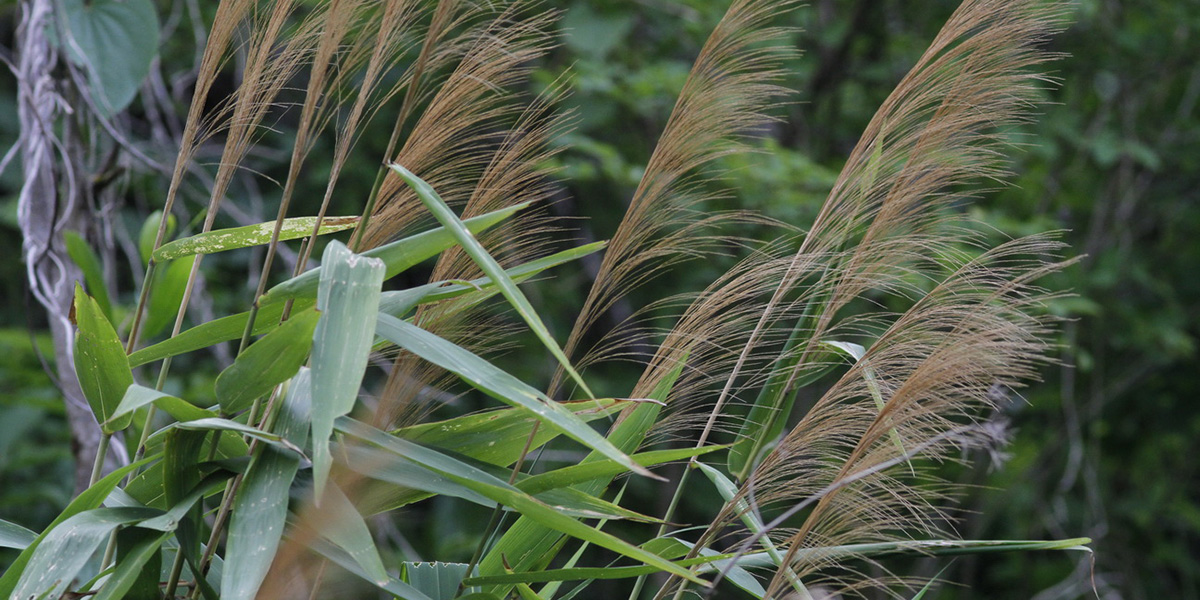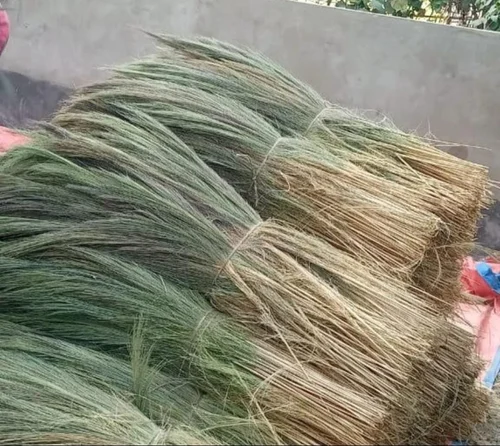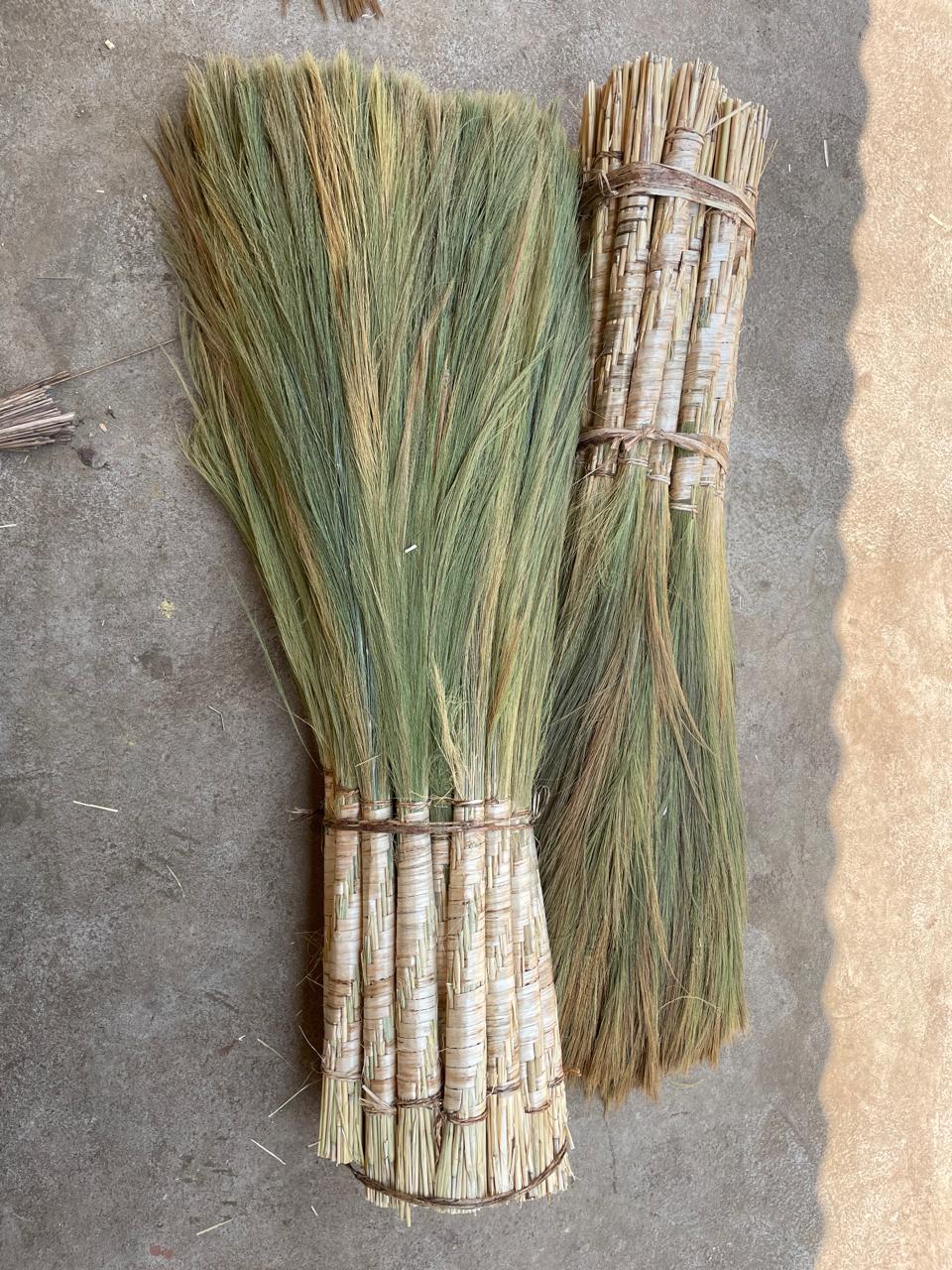Humble broom sweeps poverty from tribal hamlets
Made mostly by tribal women, the humble household broom is a designated handicraft that is bringing income and empowering many families to become financially independent and protect their forests.
Gathering Broomgrass: Nature’s Broomstick Ingredient
Step-by-Step Broomstick Making
1. Selecting Materials
- Broomgrass or Other Local Grasses: Tribal broomsticks are usually made from strong, fibrous grasses like broomcorn, sorghum, or other locally available plants that are tough, flexible, and durable. These grasses are preferred because they can be easily gathered and are strong enough for sweeping tasks.
- Wood for the Handle: A sturdy branch or sapling from a local tree, such as bamboo, eucalyptus, or other straight and solid wood, is selected to serve as the broomstick’s handle. The choice of wood depends on what is locally available.
- Binding Materials: Natural fibers, vines, or animal sinew are often used to tie the broom bristles to the handle. These materials are gathered from plants and animals within the region, ensuring they are both durable and biodegradable.
2. Preparing the Grass or Plant Fibers
- Harvesting the Grass: The grass or plant fibers are collected at the right time, when they are mature but still flexible. Tribal communities often select the best quality plants for making brooms, ensuring they are free of damage or diseases.
- Cleaning and Sorting: After harvesting, the fibers are cleaned to remove dirt, leaves, or other impurities. The fibers are then sorted by size and strength, as the most robust fibers will be used for the broom’s bristles.
3. Preparing the Handle
- Choosing the Right Wood: A straight branch or sapling is selected for the broom handle. The wood should be strong enough to support the weight of the bristles and resist breaking during use. Bamboo is a common choice due to its strength, flexibility, and lightweight nature.
- Shaping the Handle: The handle is then cut and shaped, often using traditional tools such as knives or axes made from stone, bone, or metal. The handle should be smooth and comfortable to grip, sometimes treated with natural oils to preserve the wood.
4. Attaching the Bristles
- Arranging the Grass: The grass or plant fibers are bundled together at one end. The ends that will touch the ground are aligned to make sweeping more efficient. The bundle is placed carefully around the bottom part of the handle.
- Binding the Fibers to the Handle: Natural twine, vines, or even animal sinew is used to tightly bind the grass bundle to the handle. This process ensures that the bristles stay firmly in place during use. In some cases, the fibers may be woven around the handle, creating a secure bond.
5. Finishing Touches
- Trimming the Fibers: Once the grass is attached to the handle, the bristles are trimmed to the desired length. The broom can have long or short bristles depending on its intended use, whether for sweeping large outdoor spaces or detailed indoor cleaning.


